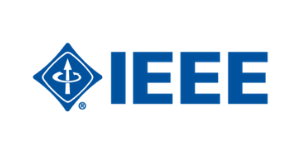Archives: Organizers
Joachim Burghartz
Aaron Voon-Yew Thean
Kourosh Kalantar-zadeh
Kourosh Kalantar-Zadeh is a professor of Chemical Engineering at University of New South Wales (UNSW), Sydney, Australia. He is one of the Australian Research Council (ARC) Laureate Fellows of 2018. Prof. Kalantar-Zadeh is involved in research in the fields of materials sciences, electronics, and transducers. He has co-authored of over 450 scientific papers and books and is also a member of the editorial boards of journals including ACS Sensors, ACS Applied Nano Materials, Advanced Materials Technologies, Nanoscale and ACS Nano. He has received many international awards including the 2017 IEEE Sensor Council Achievement, 2018 ACS Advances in Measurement Science Lectureship awards and 2020 Robert Boyle Prize for Analytical Science, Royal Society of Chemistry (RSC), UK. His name has also appeared in the Clarivate Analytics most highly cited list since 2018.
John A. Rogers
Takao Someya
Joseph Andrews
Susi Menon
Chen Jiang
Vassili Karanassios
Vassili Karanassios is a Professor of Chemistry at the University of Waterloo (Ontario, Canada) and a co-founder of a degree-program in nano-technology engineering at the same University. Professor Karanassios received his Ph. D. from the University of Alberta (Edmonton, Canada) and was a Post Doctoral Fellow at McGill University (Montreal, Canada). In 2009, he held a Leverhulme award in the UK where he was a visiting Professor in Chemistry (Sheffield University), an Overseas Fellow of Churchill college (Cambridge University, UK), and a visiting Professor of Engineering (Cambridge University, UK) in the Center for Advanced Photonics and Electronics (CAPE). Professor Karanassios and his group published (among others) on microfluidics and nanofluidics, on 3D printing and on rapid prototyping, on spectral interference correction using Artificial Neural Networks (ANNs) and Deep Learning, and on smartphone-enabled data acquisition and signal-processing from a variety of sensors for on-site chemical analysis and (potentially) for IoT applications.







